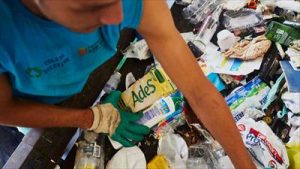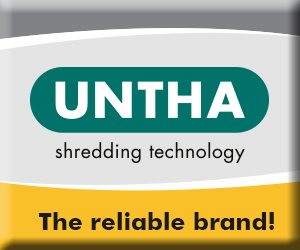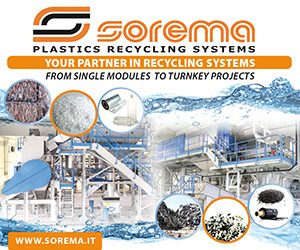 To begin to recover targeted plastics from multi-layer packaging, one of the world’s largest consumer product companies says it will use a unique technology and “empower waste pickers.”
To begin to recover targeted plastics from multi-layer packaging, one of the world’s largest consumer product companies says it will use a unique technology and “empower waste pickers.”
London-based Unilever announced it will build a pilot plant in Indonesia later this year to test long-term commercial-scale viability of what’s called the “CreaSolv” process. The company will target pouches, bags and packets – items it refers to as “sachets.”
The CreaSolv process has been patented by the German Fraunhofer Institute for Process Engineering and Packaging IVV, which has used it to remove embedded brominated flame retardants from plastics in electronics and appliances so the polymers can be recycled. Unilever and Fraunhofer created a new solvent so the process could be applied to multi-layer flexible packaging, a Unilever representative told Plastics Recycling Update.
Earlier this year, Unilever pledged to ensure that all of its packaging is recyclable, reusable or compostable by 2025.
“At the start of this year we made a commitment to help solve this problem, developing new recycling technologies,” David Blanchard, chief research and development officer at Unilever, stated in a press release. “We intend to make this tech open source and would hope to scale the technology with industry partners, so others – including our competitors – can use it.”
In March, Conrad MacKerron, senior vice president of advocacy group As You Sow, wrote in Resource Recycling that he’s seen consumer product companies become more receptive to the importance of ensuring recovery of multi-layer flexible packaging. But a remaining challenge, he noted, was cost-effective technologies to compatibilize or separate resins in those products.
The CreaSolv process involves using a solvent to selectively dissolve targeted polymers. Doing so removes contaminants and purifies the plastic at the molecular level, according to Fraunhofer IVV’s description of the technology. Next, contaminants are physically separated from the recovered polymer solution before a precipitating agent is used to recover the plastic from the solution.
If necessary, reclaimers can perform crushing and pre-cleaning upstream of the process, and they can complete mechanical concentration, drying and compounding downstream.
“With this innovative pilot plant we can, for the first time ever, recycle high-value polymers from dirty, post-consumer, multi-layer sachets,” Andreas Mäurer, head of the plastics recycling department at Fraunhofer IVV, stated in the release. “Our aim is to prove the economic profitability and environmental benefits of the CreaSolv Process. Our calculations indicate that we are able to recover six kilos of pure polymers with the same energy effort as the production of one kilo of virgin polymer.”
Regarding collection channels in Indonesia, Unilever is currently working with local waste banks, governments and retailers, according to the release. Additionally, it “will look to empower waste pickers, integrate them into the mainstream economy and to provide a potential long-term income, generating wider growth in the economy.”



